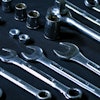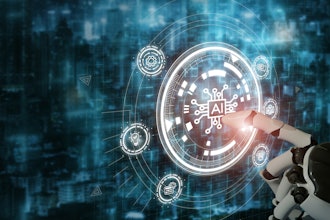In many cases, paper is the natural enemy of efficiency and a major “blind spot” for management and executives. When information and data is stored on voluminous quantities of paper, it cannot be shared, tracked, or acted upon efficiently.
As manufacturers and distributors have embraced technology to reduce costs and increase efficiencies, they have quickly learned a fundamental truth: technology can move a company forward only as far as its business processes allow.
Especially with enterprise resource planning, or ERP, businesses are uncovering significant benefits from entering customer and vendor data just once for all activities, coordination of scheduling and automation of financial processes. The technology’s effectiveness is inhibited, however, by the processes that feed data into the ERP system and the movement of that data across the organization.
For example, a 2011 study sponsored by paperless document management software provider, Metafile, and issued by the Institute of Financial Operations that surveyed 209 executives, IT professionals and other employees in companies using Microsoft Dynamics ERP solutions found that paper is by far still the most prevalent form of processing accounts payable (AP) and accounts receivable (AR). Nearly 75 percent indicated that invoices are primarily shared among coworkers in hard-copy format. More than 57 percent indicated that hard copies were their principal format for sharing invoices and associated documents for approval.
In many cases, paper is the natural enemy of efficiency and a major “blind spot” for management and executives. When information and data is stored on voluminous quantities of paper, it cannot be shared, tracked or acted upon efficiently. The more frequently documents are hand-delivered around the organization for approvals or revisions, the slower the overall payment process becomes and the more likely that invoices will be lost under in-basket stacks or delayed when personnel are out of the office.
Technology offers a solution to this obstacle in the form of Paperless ERP that employs optical character recognition, or OCR, to scan paper documents for further processing in digital form. The same document-management technology can automate workflow to distribute invoices electronically direct to those who must approve them and automatically escalate mismatches between invoices and purchase orders or delivery documentation to the appropriate buyer for decision making.
The majority of companies surveyed that have implemented document management technology are simply digitally scanning, storing and retrieving financial and other documents, but have not integrated it with the company’s ERP solution. Essentially this technology is serving as a basic electronic filing cabinet. Rather than sustaining these hits to productivity and profits, manufacturers should realize that Paperless ERP, supported by the latest technology for entering, organizing and distributing documents, enables them to automate all portions of their processes both internally and externally with partners and vendors.
The Paper Barrier to Integrating Data
As has been the case with many business technologies over the years—from word processing to e-commerce—managers and their employees can be averse to change. Digitizing and integrating all data into an ERP system that eliminates most manual operations is understandably scary and can be a leap for many people who have spent their careers shuffling paper.
Those who have eliminated paper throughout the accounting process, however, rapidly discovered the immense improvements in accuracy, visibility and productivity that ERP systems can produce. While Paperless ERP is a spectacular solution for managing data generated within the organization, processes like accounts payable inherently involve external suppliers, and those vendors may still be using paper. As a result, the company must also find an effective way to digitize the data on invoices and related paper documents or, as an even better option, request that their key vendors email a PDF of the document and eliminate the scanning step altogether.
Until recently, this transformation process consisted of humans deciphering written information and keying it into the ERP system. Valuable employees have been doing very low-value work to incorporate the paper into the internally oriented ERP solution.
Automating Manual Paper Management
Paper processes can generate uncertainty and blind spots in a business. Accounting has no way to know on which desk—or in whose drawer—a paper invoice resides after it is sent around for approval, nor how long it will sit there and how much money is tied up as a result. Executives are unable to make accurate financial predictions because they see only completed transactions—not those in process, floating somewhere in the company’s structure.
With paper processes restraining the real value of Paperless ERP, the need for a way to automate the transformation of paper documents into digital data and to manage the resulting documents has prompted technology developers to innovate a new generation of devices and services. They support ERP platforms by eliminating the manual processes that have been required to introduce data from outside the company and by enabling insight for managers. For example, document management solutions such as MetaViewer, read paper invoices and automatically extract from them all the key data—such as vendor name, invoice number, amounts, payment dates and terms — and populates that data to the proper locations in the Paperless ERP accounting solution. It validates the data and checks for duplicate invoices, all before it enters the ERP system. If the solution is based on internet technology, remote stakeholders with no access to the actual ERP system can still be part of the approval workflows, plus extensive paper shipping costs to and from these locations are eliminated. This sort of integration between ERP and specialized document management and workflow represents the birth of business intelligence for midsized and larger companies.
When considering Paperless ERP, executives should ask themselves and their technology partners the following questions:
- What is the company’s current cost to process an invoice? How long does it take and what is the dollar value of the man-hours required?
- How often does the company miss out on discounts that could be claimed by paying invoices by their due date? Collecting these discounts actually can make the accounts payable department a revenue generator.
- How much time does AP spend answering supplier inquiries because of lost invoices or not being paid on time?
- Will automating AR improve cash flow as a result of implementing workflow procedures for order processing and customer service will the company get paid more promptly?
When considering the integration of a document-management solution with an ERP platform, executives should consider these questions:
- What processes should be automated? Which processes for this company’s operations will provide the greatest return if they are automated?
- What is the implementation time frame? How long will it take to set up a beta system to test new processes?
- How will the implementation be coordinated with the banks? The ERP system the company selects should have a module compatible with that of the company’s bank so that custom programming can be avoided.
- How well does the ERP system integrate with the company’s point-of-sale and/or line-of-business systems?
- How well does the system handle currency when purchases are made from foreign suppliers?
- Have project managers obtained executive buy-in to change the processes?
- How extensive will the technology vendor’s training and implementation support be? The vendor should offer different layers of training for AP staff, order-entry staff and others as individual groups, rather than training one IT person and expecting that individual to train the others.
Best Practices
Manufacturers can use an integrated document management/ERP solution most effectively by adopting the following best practices:
- Encourage vendors to move away from paper and toward an electronic format by creating purchasing documents in a digital form from the start. Electronic invoices can be saved in PDF format so that they can’t be altered and then emailed to the company.
- Review the company’s processes to ensure that they are truly efficient. Automating a bad process simply makes a bad process faster.
- Centralize accounts payable processes. If possible, all vendors should send their invoices electronically to a central office so that individual branches don’t need to manage the documents. However, if invoices must be received at remote locations, they should be simply scanned and emailed from the remote locations and captured electronically at the central location thus eliminating all paper shipping costs.
- Standardize the company’s review and approval process so that everyone can follow the same procedures and new employees will have workable guidelines. Electronic, web-based workflows assures that controls are efficiently put into place.
- Automate what can be automated and streamline the rest. Where purchasing or receiving does not have strict rules on a process, such as three-way matching, automating may be difficult and the process should instead be simplified and standardized to the extent possible. Paperless technology can also significantly reduce the burden of those exceptions and complex processes that cannot be fully automated.
- Don’t try to make the initial implementation too large. Consider streamlining certain processes in
phase 1, automating in phase 2, and streamlining and automating another area in phase 3. Make sure the technology you choose is cost effective to implement in phase one, yet has the strength and capability to expand corporate wide as you gain acceptance and prove ROI. - Get executive leadership involved and show them how they can easily gain visibility and business intelligence with the solution.
- Plan to expand the Paperless ERP solution to other parts of the organization that currently maintain paper-based processes. This will help the cost justification process to more easily gain management approval and will maximize the company’s investment in a state-of-the-art document management system.
By tossing out paper-based processes and automating a digital workflow, manufacturers can improve payment accuracy and productivity while substantially cutting costs.






















